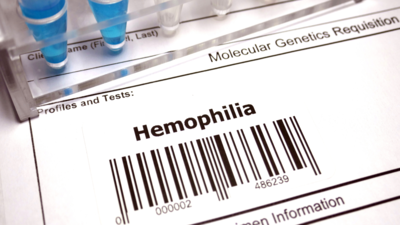- News
- lifestyle
- health-fitness
- health-news
- Beyond bleeding: Understanding more about Hemophilia and the treatments available
Trending
Beyond bleeding: Understanding more about Hemophilia and the treatments available
Hemophilia significantly impacts lives beyond bleeding episodes, causing absenteeism, pain, and disability. India, with the second-highest hemophilia population, faces challenges in diagnosis and prophylactic treatment. Innovative subcutaneous medicines offer hope by simplifying administration, improving quality of life, and working even with inhibitors, paving the way for prevention and progress.
When we think of hemophilia, the image that often comes to mind is that of extensive bleeding from an injury; or spontaneous bleeding in the body for no clear reason. However, for those living with this genetic disorder, the impact goes beyond visible wounds and breakthrough bleeds - to a persistent struggle of absenteeism from school or work, severe pain, psychological trauma, frequent hospital visits, reduced productivity and in some extreme cases, permanent deformity or disability.
Hemophilia impairs the body's capacity to form blood clots, a process essential for haemostasis following bleeding. This clotting deficiency results from mutations in genes responsible for producing clotting factors, with the genes for Factor VIII (FVIII) and Factor IX (FIX) being most commonly affected. The two most common types are Hemophilia A (deficiency of factor VIII) and Hemophilia B (deficiency of factor IX). Repeated bleeding episodes erode joint tissues, leading to chronic pain, stiffness, and eventually, irreversible disability.
India is home to the 2nd highest population of people living with hemophilia, with approximately 1.4 lakh patients. In stark contrast, globally, there are 9 lakh patients, with a 50% diagnosis rate (reaching 90% in some developed nations) and 95% prophylaxis adoption.
The standard of care involves intravenous infusions of missing clotting factor, which is called prophylaxis. However, in India, the majority of patients receive factor replacement for emergency and after a bleeding episode. This delayed approach, leads to damage to the knee, hip elbow joints., causing crippling pain, and difficulty in movement.
Another major challenge is the development of inhibitors—antibodies that neutralize the infused clotting factors, rendering treatment ineffective. When this happens, people with hemophilia requires alternative medicines called bypassing agents. Unfortunately, it demands regular access to specialized laboratory facilities, mostly available in metro cities, to monitor for the development of inhibitors and determine when a change in treatment is needed. Additionally, many patients struggle with access to treatment due to long travel distances to hospitals and difficulties with venous access, particularly in children.
Some recent innovative medical advancements are making hemophilia care better for the patients. These medicines can be injected into the skin, making the patient able to administer treatment himself or herself, and eliminating the need for regular monitoring of inhibitors. Several of these new non-factor products have a long half-life. These non-factor medicines are changing and vastly improving the management and quality of life of patients.
Most importantly, some of these newer drugs work even in patients who have developed inhibitors, providing hope for those who previously had limited treatment options. These breakthroughs are not just about stopping bleeds, they are about preserving joint health, improving quality of life, and allowing patients to live more independently.
Recognizing the limitations of on-demand therapy and embracing the long-term benefits of prophylaxis is critical in this shift.
With early diagnosis, consistent patient education, continued government support and improved access to advanced treatment options, we can move beyond crisis management to a future rooted in prevention, protection and progress. For those living with haemophilia, this means not just surviving—but truly thriving.
(Dr. Tulika Seth, Professor - Haematology, AIIMS Delhi)

About the Author
TOI Lifestyle DeskEnd of Article
FOLLOW US ON SOCIAL MEDIA
Visual Stories
Tired of too many ads?










